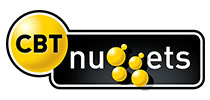در حال حاضر محصولی در سبد خرید شما وجود ندارد.

In this intermediate Palo Alto skills training, Keith Barker helps learners understand Next-Generation Firewalls (NGF).
All firewalls control traffic with an Access Control List, but next-gen firewalls have a few more bells and whistles. Next-generation firewalls control traffic based on the application and deep packet inspection, which is great. But the thing Palo Alto brings to the table is a firewall that can dynamically learn about threats across the entire internet. The moment a threat is discovered on the internet, that information is communicated to your firewall.
در این روش نیاز به افزودن محصول به سبد خرید و تکمیل اطلاعات نیست و شما پس از وارد کردن ایمیل خود و طی کردن مراحل پرداخت لینک های دریافت محصولات را در ایمیل خود دریافت خواهید کرد.


اتومات کردن اعتبار سنجی در فایروال های FortiGate

CompTIA Network+ (N10-008) Certification Training

پیاده سازی امنیت وب و ایمیل ها بوسیله Cisco WSA and Cisco ESA

VMware Certified Professional – Network Virtualization 2023 (VCP-NV 2023) Online Training

پیکربندی روتینگ در Cisco SD-WAN بوسیله OSPF and BGP
--Basic-OSPF-IPv4-Configuration-main-resized.jpg)
آموزش کامل 350-401 ENCOR : پیکربندی OSPF IPv4

TCPIP IPv6 – آموزش شبکه

IELTS Success – Secrets Revealed by an Examiner

امنیت سایبری هک کردن کلاه سفید v10

Security+ (SY0-601) Online Training
✨ تا ۷۰% تخفیف با شارژ کیف پول 🎁
مشاهده پلن ها